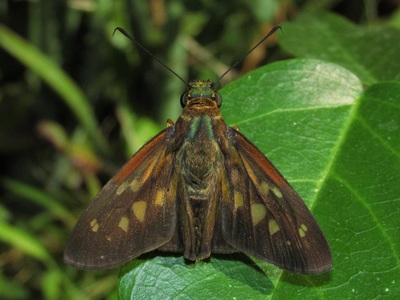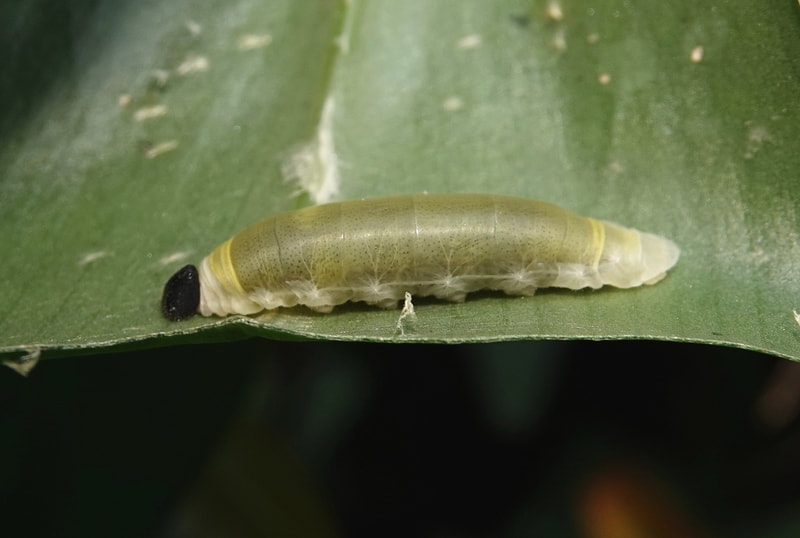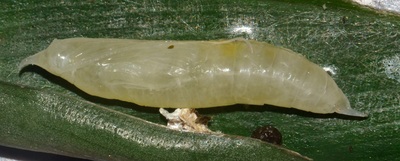Hesperiidae : Hesperiinae
Saliana esperi Smith & Hernández, 1992
Perching Saliana
Saliana esperi Smith & Hernández, 1992
Perching Saliana
Description and Similar Species: Wingspan 40-46mm. Sexes similar though females tend to have one white hind underwing spot whereas males have two or three. The underside is two-tone white and dark brown and unlike any other species. The upperside is brown with seven white spots on the forewing and one or two on the hindwing. They fly very rapidly in dark secondary woodland and settle to bask on the upperside of leaves near the ground or on the underside of leaves. Due to their very rapid flight they can be hard to spot and this has no doubt led to them being overlooked.
Range: Found from Mexico south through Central America to Southern Brazil. In the West Indies it has been found only on Cuba and on Trinidad close to the South American coast where it is said to be common.
Status: On Cuba it is widespread but rare. It has been recorded from Soroa (Pinar del Rio), Topes de Collantes, Escambray Mountains (Sancti Spiritus), Cuchillas del Toa mountains (border between Holguin and Guantánamo), Frío de Nagua in the Sierra Maestra (Granma) and Baracoa (Guantánamo), It has been known from Cuba since the 1930's but it was not until 1992 that is was described as a separate subspecies Saliana esperi soroa on the basis of the fact that the underside hindwing has a rusty brown scaling over the white area at the base which is largely lacking on continental specimens. This subspecies is endemic to Cuba.
Nectar Plants: Merania leucranda (Hernández).
Larval Foodplants: The only known foodplant in Cuba is Costus spiralis (Costaceae) which is not native in Cuba, being an introduction from Central America. This raises the question - was the butterfly brought to the country originally on this foodplant? The Cuban subspecies S. e. soroa differs from those on the continent which perhaps indicates that it has been here a considerable time. Or is there another native foodplant still to be discovered?
Range: Found from Mexico south through Central America to Southern Brazil. In the West Indies it has been found only on Cuba and on Trinidad close to the South American coast where it is said to be common.
Status: On Cuba it is widespread but rare. It has been recorded from Soroa (Pinar del Rio), Topes de Collantes, Escambray Mountains (Sancti Spiritus), Cuchillas del Toa mountains (border between Holguin and Guantánamo), Frío de Nagua in the Sierra Maestra (Granma) and Baracoa (Guantánamo), It has been known from Cuba since the 1930's but it was not until 1992 that is was described as a separate subspecies Saliana esperi soroa on the basis of the fact that the underside hindwing has a rusty brown scaling over the white area at the base which is largely lacking on continental specimens. This subspecies is endemic to Cuba.
Nectar Plants: Merania leucranda (Hernández).
Larval Foodplants: The only known foodplant in Cuba is Costus spiralis (Costaceae) which is not native in Cuba, being an introduction from Central America. This raises the question - was the butterfly brought to the country originally on this foodplant? The Cuban subspecies S. e. soroa differs from those on the continent which perhaps indicates that it has been here a considerable time. Or is there another native foodplant still to be discovered?
Egg
Larva
Pupa
Foodplants and Habitat























